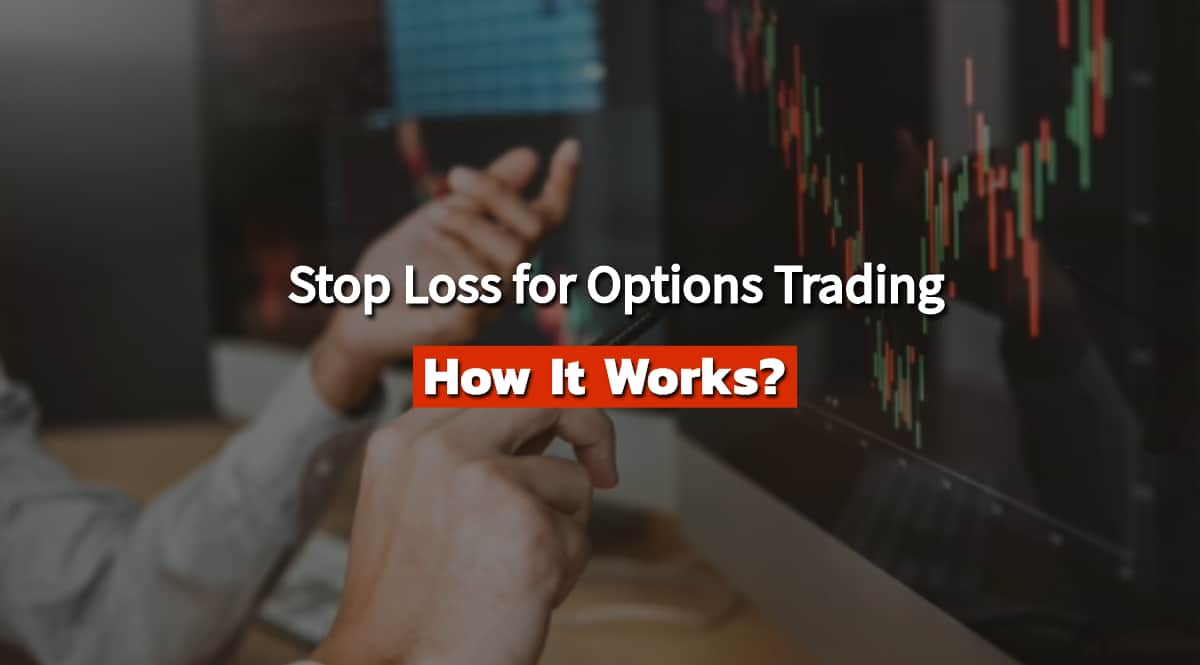Stop Loss for Options Trading: How It Works?
A stop-loss order is designed to limit an investor’s loss on a position by triggering a sale when the market turns against you. No matter the asset you trade, using stop loss is a good risk management tool. In this article we show you why entering a stop loss for options trading is important and also its implementation on other markets like stocks. Let’s take a look first at what options trading represents.
Stop loss for options trading – What is options trading?
Options trading represents a contract that gives the buyer the right, but not the obligation, to buy or sell an underlying asset at a specified price on or before a specified date. The underlying asset can be a stock, bond, currency, or other financial instrument.
There are two types of options: calls and puts. A call option gives the buyer the right to buy the underlying asset at a specified price, while a put option gives the buyer the right to sell the underlying asset at a specified price.
The price of an options contract is called the premium. The premium is determined by a number of factors, including the strike price, the underlying asset’s volatility, and the time to expiration.
Options trading can be a risky investment, but it can also be a way to profit from changes in the price of an underlying asset. However, it is important to understand the risks involved before you start trading options.
Here are some of the things that options trading represents:
A way to speculate on the future price of an asset.
A way to hedge against risk.
A way to generate income.
A way to participate in the market without having to own the underlying asset.
Options trading can be a complex and risky investment, so it is important to do your research and understand the risks before you start trading.
If you are a beginner, we recommend starting with paper trading (simulated trading) before you start trading with real money. This will allow you to learn the ropes and practice your trading strategies without risking any of your own money.
Using stop loss for options trading
You can set stop loss in options trading. A stop loss order is an order to sell an options contract once the price of the underlying asset reaches a certain level. This is a way to limit your losses if the market moves against you.
There are two types of stop loss orders in options trading:
Market stop loss order: This order will be executed at the market price when the stop price is reached.
Limit stop loss order: This order will be executed at the specified limit price or better.
For example, let’s say you buy a call option on a stock with a strike price of $100. You are willing to lose up to $10, so you set a stop-loss order at $90. This means that if the price of the stock falls to $90, your option will be sold at the market price.
Stop loss orders are an important risk management tool for options traders. They can help you limit your losses and avoid making emotional decisions when the market is moving against you.
Stop-Loss Orders Are Also a Way to Lock In Profits.
Stop-loss orders are commonly seen as a means of avoiding losses. Nevertheless, an additional purpose of this technique is to secure gains. In such instances, one may employ a “trailing stop.” This trailing stop can be specified in either points or percentages. Subsequently, the stop order trails the price as it ascends for sell orders or descends for buy orders.
Tips for setting up stop loss for options trading
Here are some tips for setting stop loss orders in options trading:
Set your stop loss based on your risk tolerance. How much are you willing to lose on a trade?
Consider the volatility of the underlying asset. If the asset is volatile, you may need to set a tighter stop loss.
Monitor the market closely and be prepared to adjust your stop loss order as needed.
Stop loss orders are not a guarantee that you will avoid losses. However, they can help you manage your risk and protect your capital.
Why Use a Stop-Loss Order when trading options?
There are several reasons why you should use a stop-loss order when trading options.
To limit your losses
A stop-loss order is an automatic order that will sell your options contract if the price of the underlying asset reaches a certain level. This can help you limit your losses if the market moves against you.
To avoid emotional trading
When you see your options losing money, it can be tempting to hold on to them in the hope that they will recover. However, this can often lead to bigger losses. A stop-loss order can help you avoid making emotional trading decisions.
To free up your capital
When you have a stop-loss order in place, you can focus on other trades. You don’t have to worry about constantly monitoring your options positions.
Here are some additional things to keep in mind when using stop loss orders for options trading:
The stop price should be based on the underlying asset’s price, not the option’s premium. The premium is the price you pay for the option, and it can fluctuate independently of the underlying asset’s price.
The stop price should be set at a level where you are comfortable taking a loss. This may be a percentage of your investment or a specific dollar amount.
The stop price should be adjusted as the underlying asset’s price changes. If the underlying asset’s price moves in your favor, you may want to move your stop loss order to lock in your profits. If the underlying asset’s price moves against you, you may need to move your stop loss order closer to the current price to protect your losses.
By following these tips, you can use stop loss orders to help you manage your risk and protect your capital when trading options.
Is the usage of stop loss different in stock market and options trading?
The usage of stop loss is similar in both stock market and options trading. It is an order to sell an asset once the price reaches a certain level. This is a way to limit your losses if the market moves against you.
However, there are some key differences in how stop loss orders are used in the two markets.
In the stock market, stop loss orders are typically used to limit losses on long positions. A long position is a position where you buy an asset and hope that the price goes up. If the price of the asset goes down, you could lose money. A stop loss order can help you limit your losses by selling the asset at a predetermined price.
In options trading, stop loss orders can be used to limit losses on both long and short positions. A long position in options is a position where you buy an option contract that gives you the right to buy the underlying asset at a specified price. A short position in options is a position where you sell an option contract that gives someone else the right to buy the underlying asset from you at a specified price.
In the stock market, stop loss orders are typically market orders. This means that they will be executed at the market price when the stop price is reached.
In options trading, stop loss orders can be market orders or limit orders. A market order will be executed at the market price when the stop price is reached. A limit order will only be executed at the specified limit price or better.
How To Determine the optimal price level for setting up a stop-loss?
Determining the optimal price level for setting up a stop loss depends on many factors. These factors include the volatility of the asset, your risk appetite and investment goals. Traders generally use technical analysis metrics such as support and resistance level to spot a good price for a stop loss order.
Stop Loss for Options Trading: The Bottom Line
Using stop loss order for options trading is simple and important. It also has many advantages. It prevents significant losses and it is helpful for locking in profits. No matter your investment style, you should absolutely use this tool as an insurance policy that gives you protection in volatile markets.
The post Stop Loss for Options Trading: How It Works? appeared first on FinanceBrokerage.
























